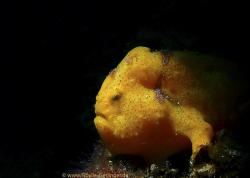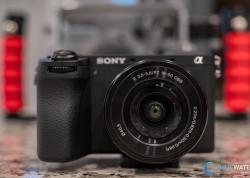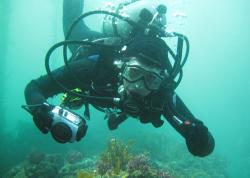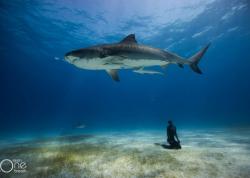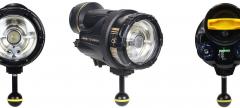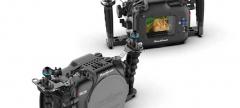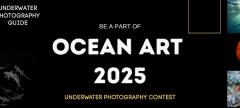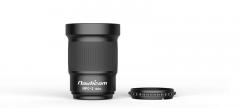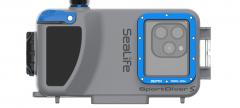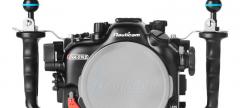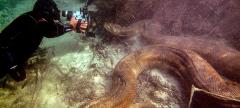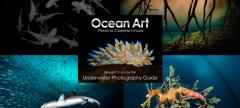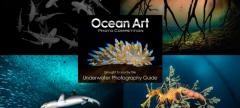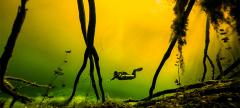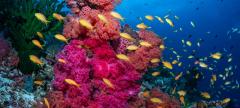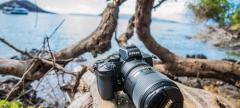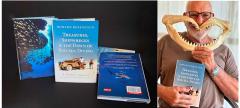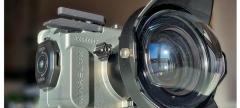Tips for Dive Model Photography
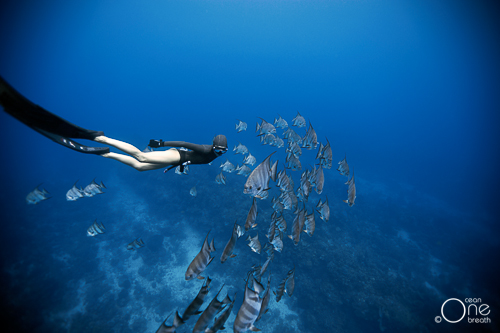
There is an old saying that goes “never work with animals or children due to their unpredictable nature”, but I guess the actor W.C. Fields, who coined this phrase, never tried his hand at dive model photography! The underwater realm is a far cry from the dry safety of a movie set, however the mercurial mixture of water, wildlife and breath-holding models presents a very different and sometimes equally challenging equation to work with. We have devised the following tips from years of experience freediving and shooting that we hope will help underwater photographers and models alike.
Model Aptitude
The model is just as important as the photographer since you will be working together as a team; both must have an aptitude for the job at task. It is essential to work with a model who is comfortable underwater and who can hold their breath with composure and bodily awareness. Freedivers or competitive swimmers make great oceanic subjects. Bear in mind that pool photography is vastly different to shooting with models in the ocean where there are different variables to contend with, including waves, currents, water temperatures and marine life. This is particularly pertinent when working with models together with creatures like sharks or marine mammals. Both model and photographer not only need to be comfortable in the water, but also have thorough knowledge of the animal and their behavior in order to achieve optimal photo results and in some circumstances, safety! Freediving with the large Caribbean reef sharks of Roatan, Honduras was a perfect example where both photographer and model needed knowledge, awareness and confidence to dive and shoot in quite exhilarating conditions.


Creative Concepts
Pre-planning and discussing a creative vision or concept for a photographic shoot with your model is essential in order to ensure that you are working in artistic unison. It is important to remember that seeing a human underwater with no breathing apparatus is a very curious sight for viewers since we have placed our model in a sublime submerged realm. Underwater, humans are dream-like and ethereal, so play with ideas that convey these emotions and sensations within the underwater landscape you are shooting. The most significant photo-shoot that comes to mind is our exploration of the Cenotes of the Yucatan Peninsula in Mexico. These sunken pits in the jungle have deep mythic connections to the ancient Mayan civilization and with pristine waters, jagged limestone walls and piercing cathedral light we were able to create some striking, other-worldly images.


Be Spontaneous and Flexible
Pre-plan, however also be spontaneous and prepare for the unexpected. Creative concepts are essential, but don’t be restricted by them and always be ready to go with the flow of the ocean and all of her surprises. Unexpected angles of light, shadow, currents, water visibility and particularly marine life will mean that you need to be flexible and creative on the spot, both as a photographer and a model. Although it is advisable to choose a dive location that you have knowledge of beforehand, the ocean is it’s own beast and will throw many different variables at you - both the good and the bad. There have been circumstances where we have decided to call it a day when the conditions simply weren’t working in our favor and thus save our energies for the coming days, so take note to factor additional days into your shooting schedule. For the most part, the ocean has surprised us with the fantastic and fun, particularly when working with marine life. Freediving with the wild spinner dolphins of Hawaii was the perfect example of both model and photographer working together and improvising as the dolphins would play, twirl, twist and follow us as they wished.


Freediving versus Scuba Diving
As an underwater photographer, you need to ask yourself what is the best way to capture your image, on scuba or on breath-hold? While some photographers might not be strong freedivers, shallow water shooting may not require demanding breath-hold capabilities and may be more beneficial for the circumstances. As a freediving photographer there are many advantages, including being able to rise to the surface and discuss how the shoot is developing, what changes you want to make with your model or new spontaneous ideas that come to mind. Freediving also enables the photographer to move around freely and shoot from the surface to the depths all in one dive and thus capture different angles with ease. Marine life is more curious of people underwater without the noise and bubbles of scuba and so you are more likely to get closer shots. That said, you do need to be a reasonably strong freediver to be able to hold your breath, carry the equipment, frame your subject and stay safe. The first priority of freediving is safety, so this is only an option for photographers who have the required knowledge and experience.
Of course scuba diving is the most conventional option as a photographer, and it is very advantageous to stay underwater for an extended length of time. Scuba diving is also the best option for those who are not experienced with freediving. Before an underwater shoot on scuba, be sure to prepare clear communication hand signals with your model so that you can ‘talk’ underwater and adapt your shoot as the dive progresses.

Mermen and Mermaids
Women have conventionally been the subjects of underwater model photo shoots, probably because water possesses fluid feminine characteristics or because the myth of the mermaid lives on. Men, however, make great underwater models as well. When working with either, consider which angles, poses and compositions work best for females and for males and how this will contrast or compliment the underwater landscape, light and shadow. Women naturally appear more graceful and gentle underwater, which can easily be emphasized by the model and her body positions, whereas men need to consider angles and attitudes that convey masculinity and strength.


On a final note, communication is key throughout all the pre-planning, shooting and even post-editing in order to achieve the best results for both model and photographer. You need to work together as a team, and in one way the photographer and model are very much like the director and actor on a movie set, except with the exciting and wildly unpredictable ocean as your stage.
Further Reading
RECOMMENDED ARTICLES
SUPPORT THE UNDERWATER PHOTOGRAPHY GUIDE:
The Best Service & Prices on u/w Photo Gear
 Visit Bluewater Photo & Video for all your underwater photography and video gear. Click, or call the team at (310) 633-5052 for expert advice!
Visit Bluewater Photo & Video for all your underwater photography and video gear. Click, or call the team at (310) 633-5052 for expert advice!
The Best Pricing, Service & Expert Advice to Book your Dive Trips
 Bluewater Travel is your full-service scuba travel agency. Let our expert advisers plan and book your next dive vacation. Run by divers, for divers.
Bluewater Travel is your full-service scuba travel agency. Let our expert advisers plan and book your next dive vacation. Run by divers, for divers.




